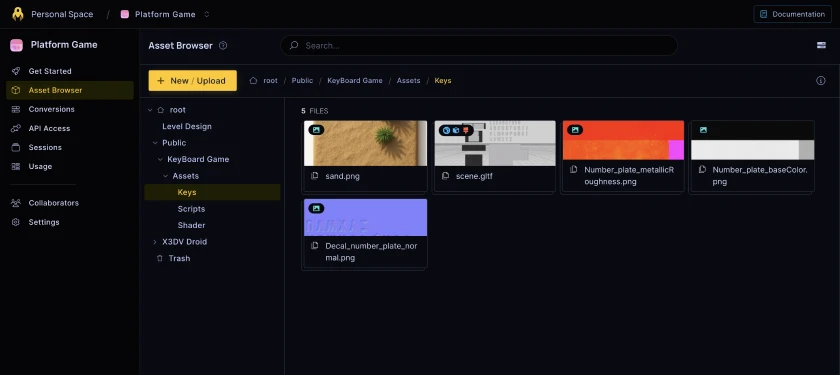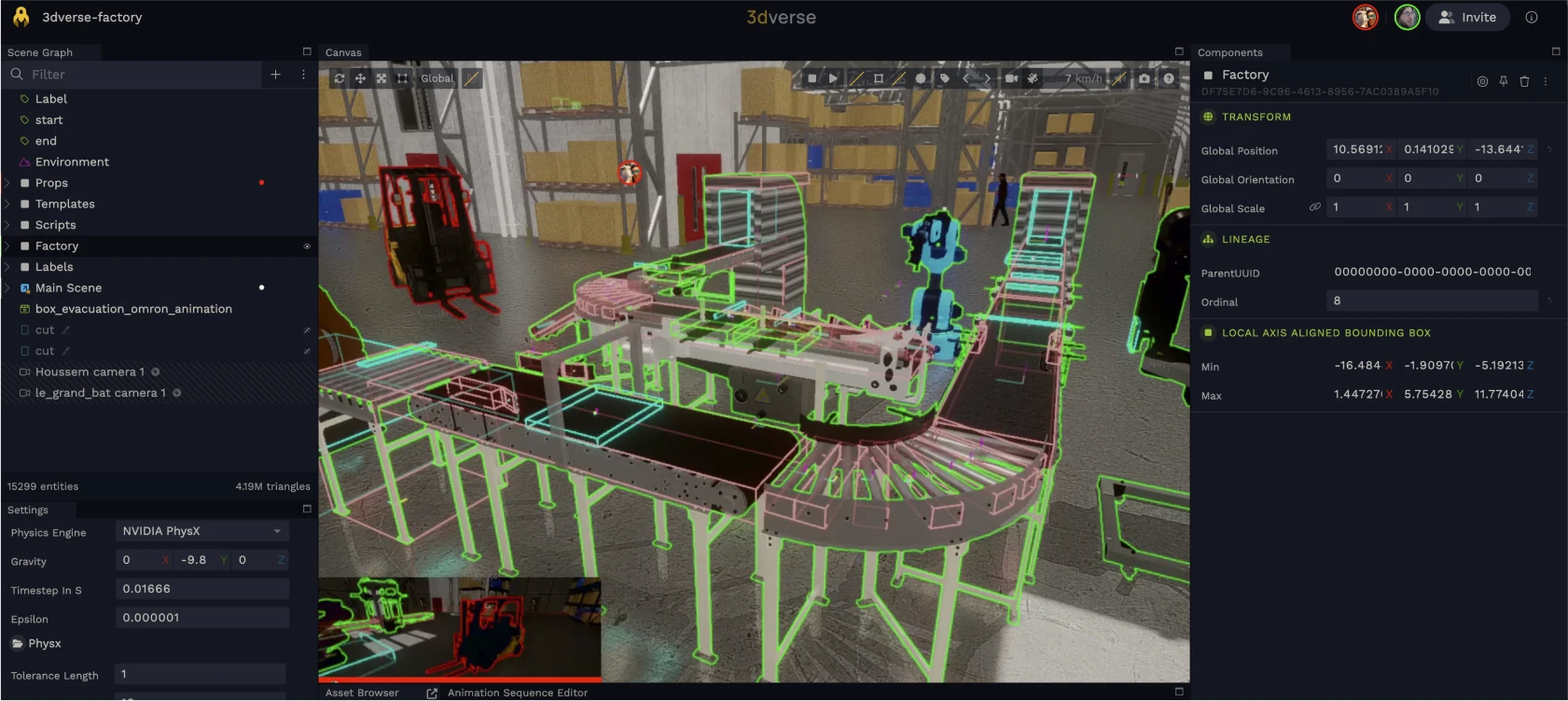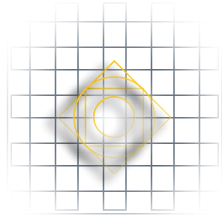3dverse Documentation Get Started
With Cloud Native Real-time 3D
Here are some tips on where to start:
What is 3dverse?
Core concepts
How it is different from Unity or Unreal?
Deploy your first app
- Learn the essentials
- Deploy your first app to the web.
Guide
Console
The command center for your 3D projects. Learn how to manage your projects, upload assets, generate API keys, and monitor sessions in one place.

Editor
The collaborative space for your 3D scenes. Learn how to create, edit, and manage your 3D assets with ease.

Engine
The engine is responsible for rendering your 3D scenes, handling physics simulations, and managing resources.
Applications
Learn how to build and deploy applications using 3dverse.
Core concepts
Go deeper into the foundational concepts of 3dverse and understand the principles that drive its architecture.
